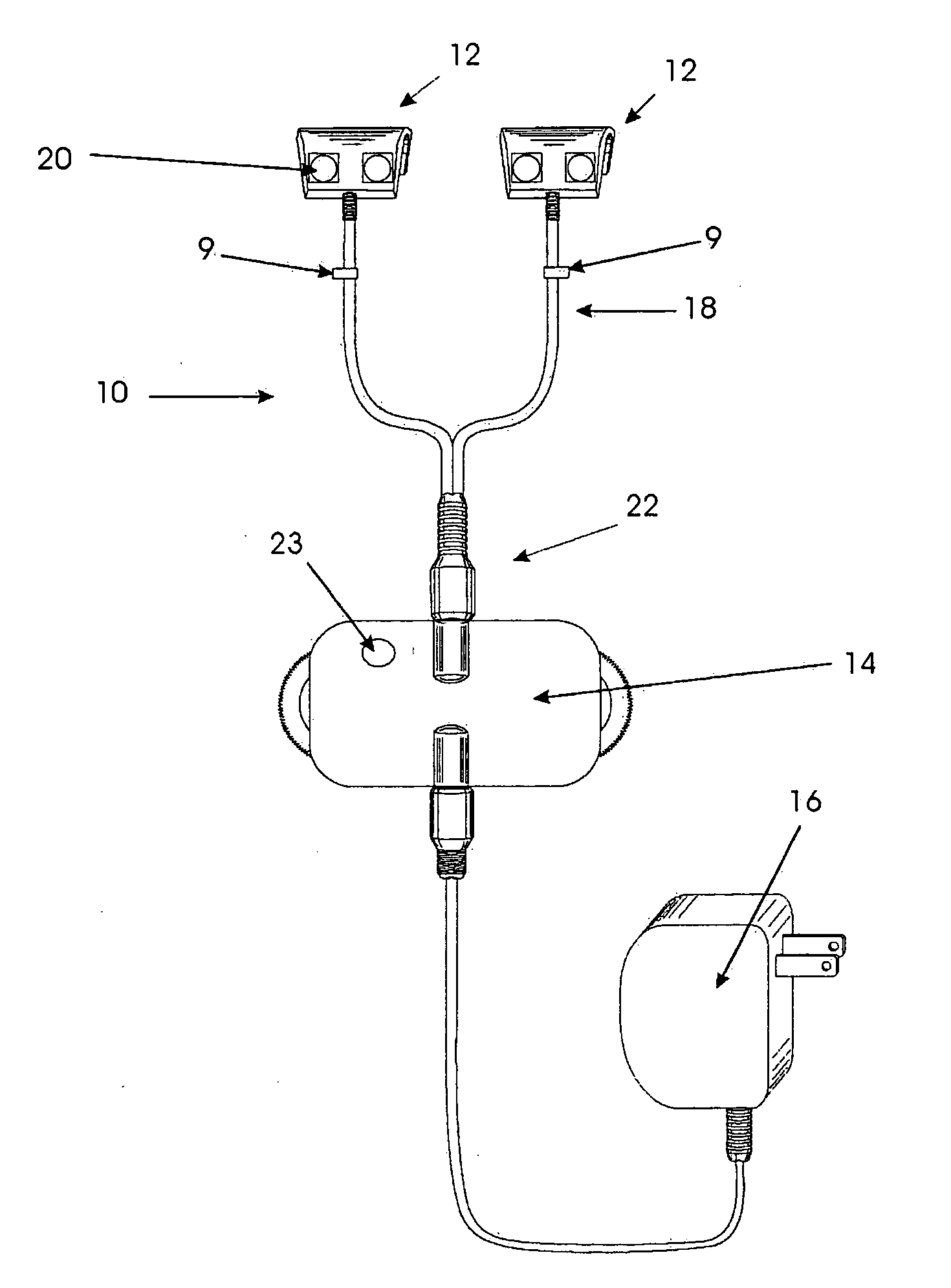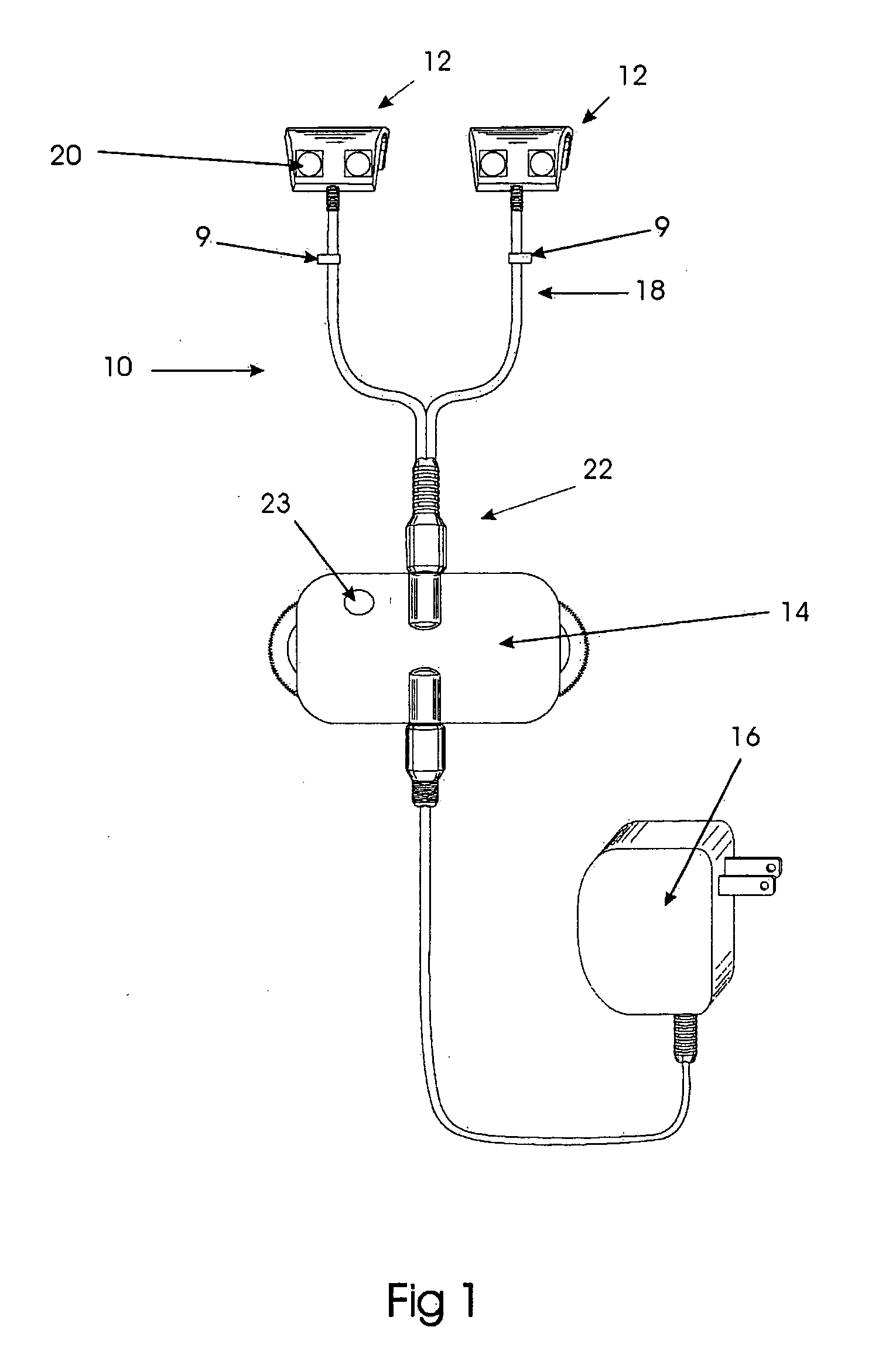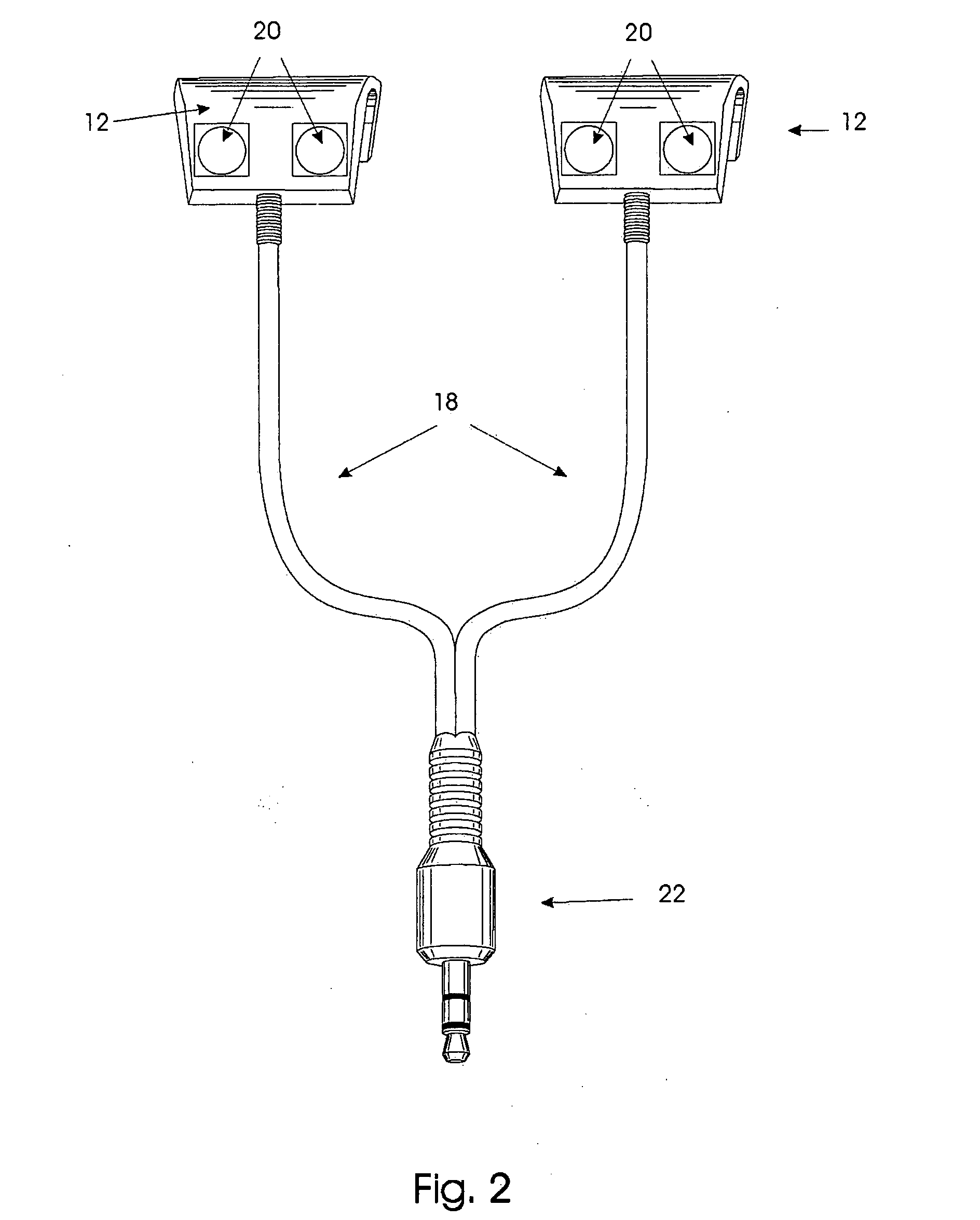Proper illumination of the oral cavity is difficult to achieve for such varied reasons as, for example, the opening of the patient's mouth is reduced, the dentist is placed between the light and the patient's mouth, and the dentist also introduces his or her hand with the instruments to carry out the treatments and examinations.
The source of light is focused toward the patient's mouth, but most of the illumination provided is wasted because the dentist, in being very close to the patient's buccal cavity, blocks a great part of the light emitted with his or her head.
Another part of the illumination is also blocked by the dentist's hand that manipulates the instruments and by the instruments themselves, thus generating many shadows and thereby greatly limiting the amount of light that can arrive in the interior of the patient's mouth.
An additional factor leading to poor illumination of the oral cavity resides in the morphological factor of the buccal cavity, given which it is impossible to obtain proper illumination unless the dentist and the patient adopt very uncomfortable positions for long periods with the objective of allowing the passage of light and thus obtaining proper illumination.
For example, U.S. Pat. Nos. 1,122,086; 1,094,575; 2,201,331; 1,998,374; 2,528,458; 2,800,896; and 3,171,203 disclose systems of illumination that solve the problem of blocking the illumination, but at the same time, present such new inconveniences as, for example, being voluminous and using focused
incandescence, which generates a great deal of heat.
In general, systems of illumination by means of
fiber optics have the same principle and consequently, possess the same defects.
The
light source requires
high energy consumption to generate sufficient intensity and because of this, generates a great amount of heat and thus needs a cooling
system.
This makes the
light source a voluminous and annoying apparatus.
Although optical fibers are efficient in the conduction of light, their greatest inconvenience resides in the fact that they are very fragile and break easily.
Another inconvenience is that
optical fiber presents an
attenuation coefficient that rises if the
fiber is bent, meaning that the fibers should present large radii of curvature, and this inhibits their manipulation.
That is, if a
fiber bends too much, the attenuation of the conducted light will become significant, and as a consequence, reduce the intensity of the conducted light.
A further
disadvantage that optical fibers exhibit is their small cross section, which produces a limited field of illumination, without mentioning the difficulty in splicing these fibers.
In addition to the expensive equipment and special facilities that the implementation of fiber optic technology requires, there is [also] inconvenience in handling, and the fibers tend to deteriorate with cycles of sterilization.
All these designs of instruments with fiber optic illumination systems are limited to the illumination of a small area of the oral cavity and they have the disadvantages mentioned previously for the use of fiber
optics.
The lip
retractor with illumination
system disclosed by Schroer can provide general illumination of the oral cavity, but it has the disadvantages mentioned of fiber
optics and it requires, moreover, structures especially designed to house the fiber optics.
The device presents the inconvenience of being voluminous and of complex construction, because of which, part of the arch is hidden beneath the
bite block and that area cannot be reviewed or examined.
Moreover, because the illumination used in this device is provided by means of fiber optics, the device possesses the disadvantages inherent to the use of fiber optics.
Nevertheless, this instrument has the inconvenience that the area of illumination is very limited.
U.S. Pat. No. 6,332,776 discloses a bite block that makes use of a reflected
light source of optic or internal fiber to illuminate the mouth, and the publication of United States of America
Patent Application No. 2005 / 0239017 is related to another bite block design in ring form that is used as a diffuser of microfluorescent light; however, both bite block designs hide part of the patient's arch and therefore, make the review and examination of these areas impossible.
U.S. Pat. Nos. 4,643,172 and 4,807,599 describe illuminating tongue depressors that comprise a means to concentrate and direct the light where said means is used as a diffuser that would be very useful for a review procedure since only a defined area of the mouth is illuminated, and therefore, it is not capable of illuminating the intraoral cavity for a treatment since it requires holding the
tongue depressor while the dentist is working, which means the assistant loses a hand that could be used to help the dentist.
This illumination device is excellent when preparing a cavity, but because the light is mounted on the instrument, when the instrument is withdrawn from the mouth, the dentist will be without light and when working with another instrument that does not have this illumination device, he or she will continue working under the usual (faulty) conditions of illumination
It is thus impossible to work with this addition placed on a straight instrument.
Therefore, the device disclosed by Nakanishi can only be placed on 2% of the instruments, since 98% of instruments are straight, and because of this, the device does not satisfy 100% of the need for illumination of the intraoral cavity required by the dentist.
This type of device presents some inconveniences, such as, for example, when emitting the light laterally what is illuminated is really the lingual faces of the teeth opposite, but the occlusal faces would be moderately illuminated, while the vestibular faces would not be illuminated.
Thus, it is impossible for this illumination device to be useful in illuminating the interior of the preparation of a tooth.
Another inconvenience in the illumination device of U.S. Pat. No. 6,830,451 and publication US2005 / 0239018, resides in the necessity that the patient have the entirety of his or her back dental pieces, upper as well as lower, because this device cannot be used in a patient who lacks molars, either upper or lower, as the device rests on their occlusal faces.
 Login to View More
Login to View More  Login to View More
Login to View More 


